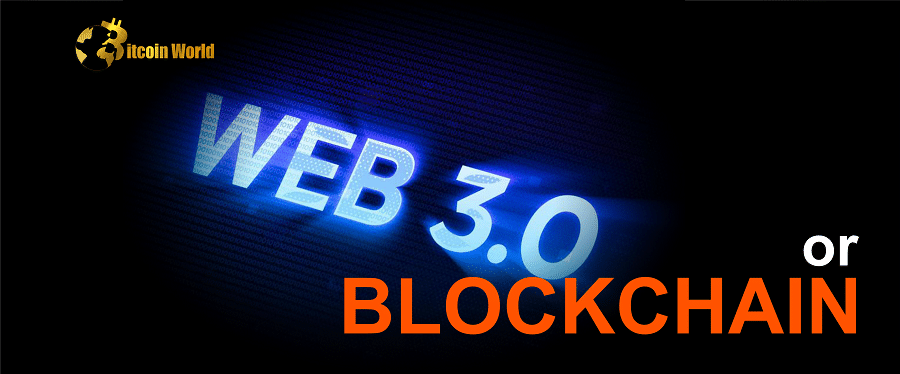John deVadoss, former Managing Director at Microsoft and current Head of Development at Neo, wrote an op-ed last month criticising the term Web3. According to deVadoss, the term is a marketing ploy by “VC-types” that adds little value to the pre-existing term “blockchain.”
In an article for Cryptoslate, he writes that one of the reasons for its tenacity is that governments dislike the term “crypto.”
Neo was established in 2014 as Antshares. John previously worked for Microsoft for nearly two decades, developing platforms such as.NET and Azure. Web3 is, in his opinion, “more nonsense than sense.” Its trendy status can be attributed in part to the “hoi polloi” on Twitter and LinkedIn who use the term “to attach themselves to what they see as the next big thing.”
For more than two decades, the term “Web3” has been bandied about. However, it gained popularity in late 2021, when notable figures such as Elon Musk began to discuss it. According to Google Trends, interest in the term has fallen by approximately 25% since its peak in December 2021. However, in November 2022, the market began a downward spiral from which it has yet to recover.
Web3 is defined differently depending on who you ask. However, the term Web 3.0 was first used in 1999 by Sir Tim Berners-Lee, the inventor of the World Wide Web. His definition was also referred to as the “Semantic Web.” Berners-vision Lee’s called for a future in which all computers could intelligently analyse all data on the internet, with “machines talking to machines.”
Tags, web structures, and shared vocabulary, definitions, and standards would enable this intelligent analysis, making all data on the web machine-readable. W3C, or the World Wide Web Consortium, an organisation led by Sir Tim Berners-Lee, continues to advocate for this Web3 definition to this day.
However, the most widely accepted definition of Web3 is that proposed by Gavin Wood, the founder of Polkadot. Wood coined the phrase in 2014 to describe a third stage of the internet. One that was more decentralised and less dominated by Big Tech’s surveillance capitalism. Wood, a co-founder of Ethereum, envisioned the third stage running on blockchain, or distributed ledger technology (DLT). Wood claims that Web3 will bring about significant social and economic change by making value and information exchange more secure, efficient, and transparent.
Wood told CNBC’s ‘Beyond The Valley’ podcast last year that Web3 can enable a trustless internet. “We have to trust the people who provide the services.”
Algorithms and blockchain-based smart contracts, in his vision, would replace trust. One feature of Ethereum set it apart from Bitcoin. “So it’s kind of peer to peer, right? … “The idea is that everyone contributes a small portion of the overall service,” Wood explained.
“As a result, no one really has any advantage over anyone else… not in the same sense, at least, as you know, when you go to Amazon, eBay, or Facebook, where the company behind the service has absolute power over what they do in providing the service.”
Wood’s definition has gotten a lot of attention and criticism, especially since its popularity peaked in December 2021. Elon Musk called the term “more marketing than reality” that month, which isn’t even that controversial. Most Web3 supporters admit that it is more of a journey than a destination. And, with blockchain-based services still accounting for a small portion of internet traffic when compared to their Web2 counterparts, it’s not necessarily incorrect.
Musk also referred to the space as “BS” in response to a tweet by OpenAI CEO Sam Altman.
Another of Musk’s Twitter CEO predecessors, Jack Dorsey, does not believe the hype. Despite being a Bitcoin maximalist, the Silicon Valley hippie has a more nuanced view of Web3. He argued on Twitter that, far from being revolutionary, Web3 had the same corporate incentives as its traditional rival.
Arie Trouw, Co-Founder at XYO & CEO, told BeInCrypto that the term “Web3” can be useful if used correctly. Unlike Web2, the Web3 model allows users to control and monetize their own data without the involvement of Big Tech. “Web3 is critical in disrupting current systems that do not serve the majority of internet users,” Trouw says. “The rise of big-tech entities gatekeeping our data was facilitated by Web2. The new internet, on the other hand, will allow us to shift away from centralization and toward an open-source model.”
Berners-Lee presented his vision for the internet at a conference in Lisbon last year. “It’s a real shame, in fact, that the actual Web3 name was taken by Ethereum folks for their work with blockchain,” he said. Web3 is not, in fact, the web.”
Another disadvantage of the term Web3 is its association with cryptocurrencies. While both are ostensibly based on cryptography and blockchain, they are not the same thing. The demise of crypto titans such as FTX and Celcius has also increased people’s aversion to the term.
“I do believe that the term “crypto” has been tainted in some ways, because the mainstream associates it with get-rich-quick schemes and financial crime,” Trouw continues. “Some even refer to it as the ‘C’ word that should not be spoken. Terms like “Blockchain,” “Self-Sovereignty,” and “Zero Knowledge” better describe the innovations taking place in the space, though none are as enticing as “Crypto.”
Gavin Wood has attempted to distance himself from the two terms, albeit for different reasons. The requirement to exchange one of thousands of native tokens can unnecessarily complicate people’s entry into Web3. “I believe currency will continue to play a role in services. But, overall, I believe… we’ll start seeing services delivered without the need for tokens,” he told CNBC. “And I believe that will be a significant leap.”














